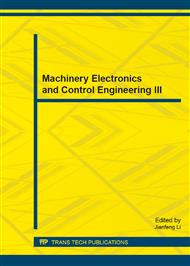p.796
p.801
p.805
p.809
p.813
p.817
p.821
p.825
p.829
Research of Fixed-Point SVG Algorithm Research Based on Deadbeat SVPWM Control
Abstract:
Nowadays, it is increasing high for power in instantaneous reactive power theory in Voltage Quality Improvement .In this paper, a deadbeat control method based on SVPWM is presented which is a new method of Reactive power compensation of SVG subsystem. This method could detect the reaction current in real-time by instantaneous reactive power theory .To improve system response speed. This paper takes the theory of voltage space vector to against to the lack of direct current control high switching frequency. Also gives the analysis about the application of the principle of voltage space vector theory. Using deadbeat control technology is to eliminate the delay caused by calculation and sampling. Combined deadbeat control and voltage space vector in Matlab simulation system of the Control scheme. Simulation results demonstrate the validity and effectiveness of this method.
Info:
Periodical:
Pages:
813-816
Citation:
Online since:
December 2013
Authors:
Keywords:
Price:
Сopyright:
© 2014 Trans Tech Publications Ltd. All Rights Reserved
Share:
Citation:


